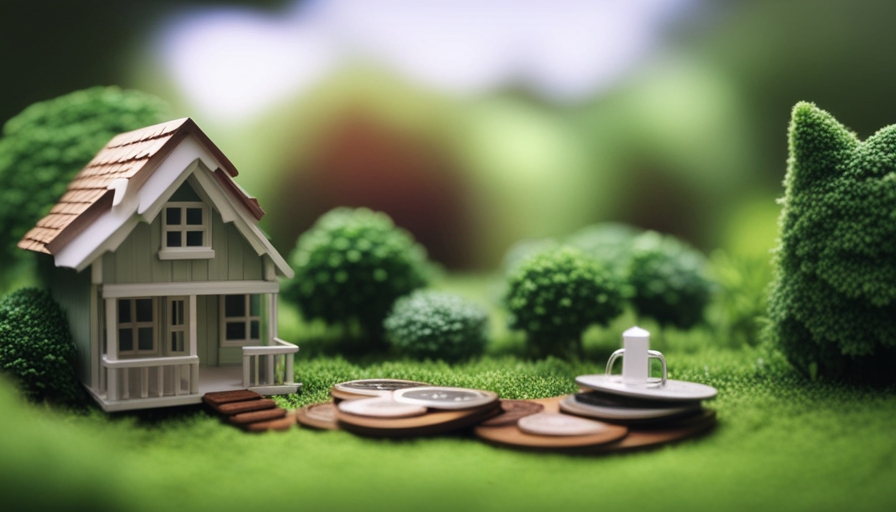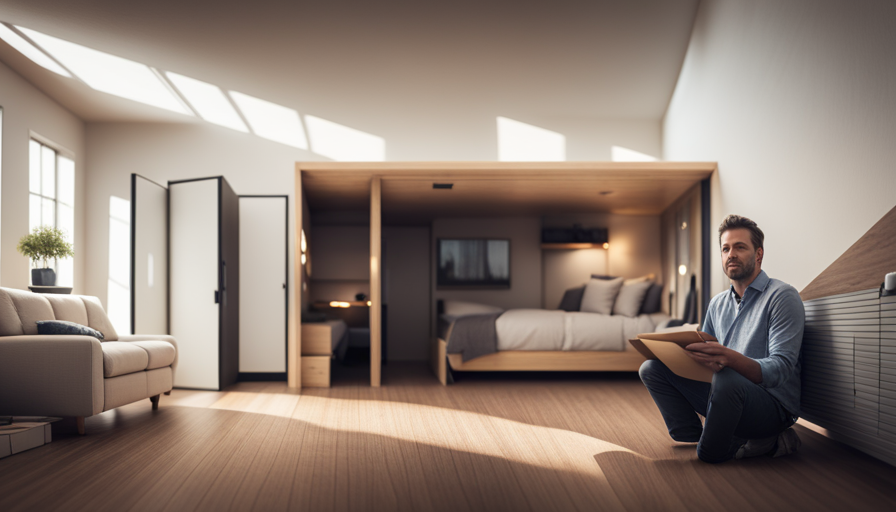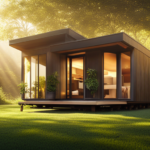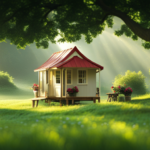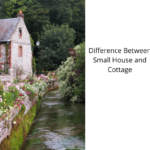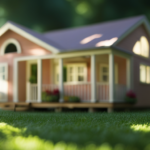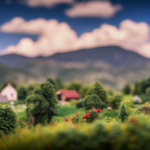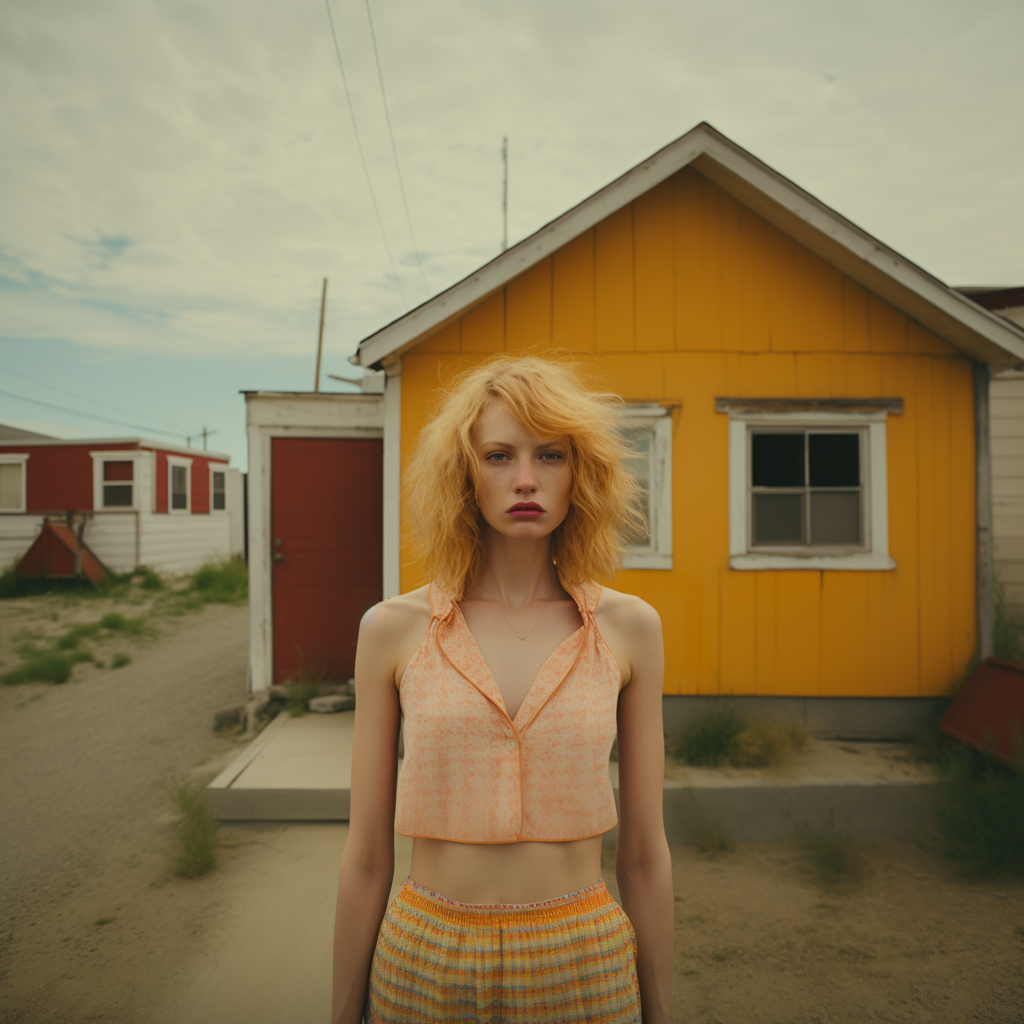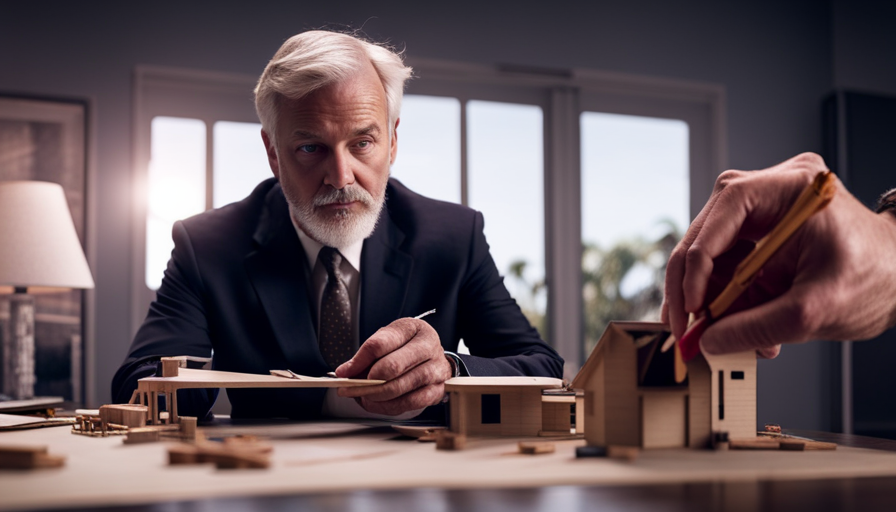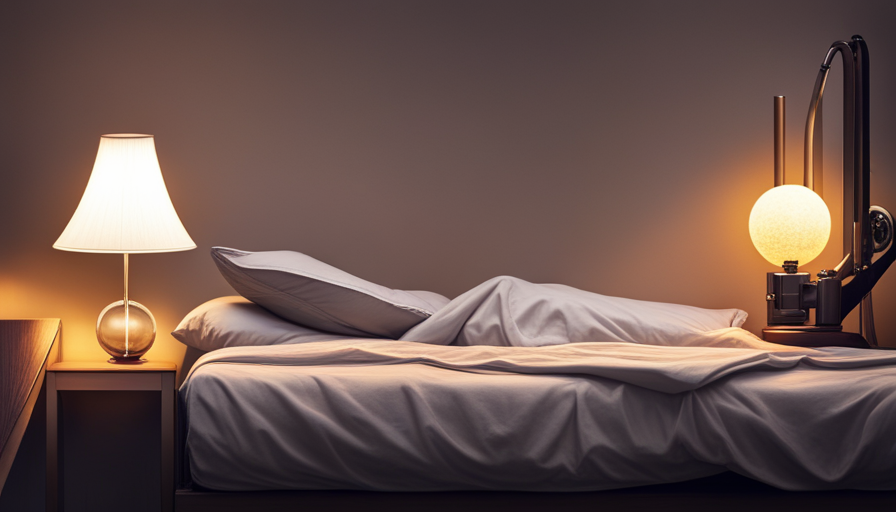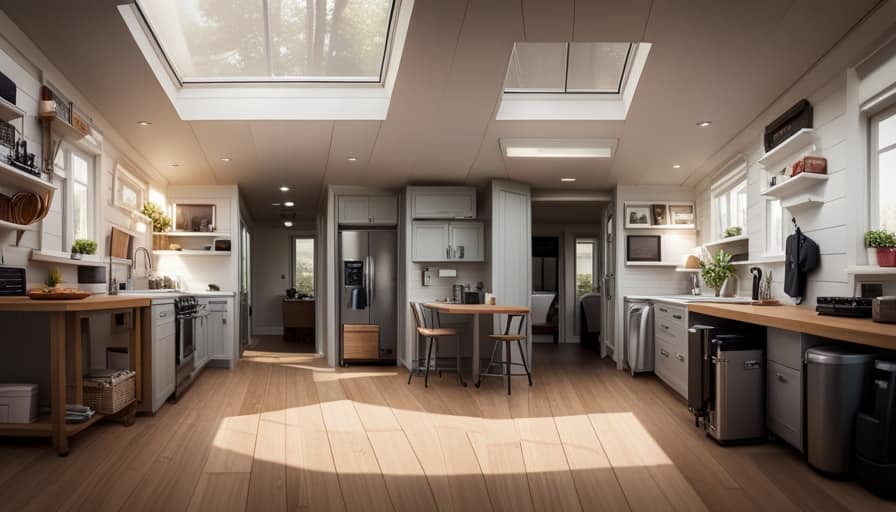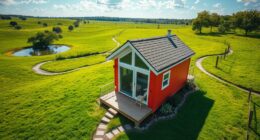Are you thinking about transitioning to a more simple and minimalist lifestyle by downsizing? A tiny house may be just what you need! But it’s important to carefully consider the financial aspects before making this big change. Interested in knowing the price of buying a tiny house? You’re in the right place! This article will provide you with all the information you need to make a well-informed decision.
Tiny houses come in various styles and sizes, ranging from cozy cottages to sleek modern designs. The cost of buying a tiny house depends on several factors, including the type of construction, materials used, and additional features. On average, you can expect to pay anywhere from $20,000 to $100,000 for a tiny house.
However, it’s crucial to remember that the initial purchase price is just the beginning. There are additional costs to consider, such as land, utilities, and maintenance. But don’t worry, I’ll guide you through all the hidden costs and unexpected expenses, so you can budget accordingly.
Whether you choose to finance your tiny house or pay upfront, I’ll explore various financing options available to help make your dream of owning a tiny house a reality. So, let’s dive in and discover the world of tiny houses together!
Key Takeaways
- Tiny houses range in price from $20,000 to $100,000.
- Additional costs to consider: land, utilities, maintenance.
- Customizations and upgrades can increase overall cost.
- Financing options available, including installment plans and tailored options for tiny house communities.
Types of Tiny Houses Available
If you’re looking to buy a tiny house, you’ll be amazed at the variety of options available to you. Tiny houses come in different designs, each with its own unique features and benefits.
One popular type is the traditional tiny house on wheels, which offers mobility and flexibility. These houses are built on a trailer chassis, allowing owners to easily move and relocate their homes whenever they desire.
Another option is the prefab tiny house, which is constructed off-site and then transported to the desired location. Prefab houses can be assembled quickly and often come with modern amenities.
Additionally, there are tiny houses built using shipping containers, which provide a sustainable and cost-effective housing solution.
Living in a tiny house has numerous advantages. Firstly, it promotes minimalism and reduces the need for excessive possessions. This can lead to a simpler and more environmentally friendly lifestyle. Moreover, tiny houses are more affordable compared to traditional homes, both in terms of upfront costs and ongoing expenses. They require less maintenance, consume less energy, and often have lower property taxes.
Overall, the variety of tiny house designs and the benefits they offer make them an attractive option for those seeking a unique and affordable living experience.
Now, let’s explore the factors that can affect the cost of buying a tiny house.
Factors Affecting the Cost
When it comes to the cost of a tiny house, there are several factors that can affect the price.
The size and square footage of the house play a significant role, as larger tiny houses tend to be more expensive.
Additionally, the materials used in the construction of the house can impact the cost, with higher quality materials generally leading to a higher price.
Finally, the level of customizations and upgrades chosen by the buyer can also increase the overall cost of the tiny house.
Size and Square Footage
Although small in size, tiny houses often offer a surprising amount of square footage for their occupants. The design of a tiny house is carefully planned to maximize every inch of space. Clever storage solutions, multi-functional furniture, and innovative layouts are all key elements in creating a tiny home that feels spacious and comfortable.
Additionally, zoning regulations play a significant role in determining the size and square footage of a tiny house. Some areas have specific requirements regarding the minimum square footage for a dwelling, while others have restrictions on the overall size of the structure. These factors can impact the cost of a tiny house, as larger square footage may require more materials and labor.
Transitioning into the next section about materials used, it’s important to consider how these choices can also affect the overall cost of a tiny house.
Materials Used
To make your tiny home feel more spacious and comfortable, choose materials that aren’t just durable but also visually appealing. When considering the cost breakdown of materials for your tiny house, keep in mind that the construction process will heavily influence the overall price.
The most common materials used for tiny houses include wood, metal, and vinyl siding. Wood is a popular choice due to its versatility and natural aesthetic. Metal siding is known for its durability and low maintenance requirements. Vinyl siding, on the other hand, offers a variety of colors and styles while being cost-effective.
Additionally, the type of insulation you choose can impact both the cost and energy efficiency of your tiny house.
As we move on to the section about customizations and upgrades, it’s important to consider how these choices will affect your budget and the overall design of your tiny home.
Customizations and Upgrades
Spruce up your small sanctuary with stylish and sensational upgrades and customizations. Here are three customization options that will transform your tiny house into a personalized oasis:
-
Smart Home Technology: Embrace the future by integrating smart home features like voice-controlled lighting, automated temperature control, and security systems. These advancements not only enhance convenience but also increase energy efficiency.
-
Space-saving Storage Solutions: Maximize every square inch of your tiny house by incorporating clever storage solutions. From hidden compartments to built-in shelves, there are endless possibilities to keep your belongings organized and out of sight.
-
Eco-friendly Upgrades: Make your tiny house more sustainable by adding eco-friendly features. Consider installing solar panels, composting toilets, or rainwater collection systems. These upgrades not only reduce your environmental impact but also help cut down on utility costs.
With these customization options and renovation possibilities, you can truly make your tiny house a unique and personalized haven. Now, let’s explore the average price range for tiny houses.
Average Price Range for Tiny Houses
When it comes to the average price range for tiny houses, there are three key categories to consider: entry-level, mid-range, and luxury.
Entry-level tiny houses typically range from $20,000 to $50,000, offering a more affordable option for those looking to downsize or live a minimalist lifestyle.
Mid-range tiny houses, on the other hand, fall between $50,000 and $100,000, providing a balance between cost and features.
Lastly, luxury tiny houses can reach prices of $100,000 or more, offering high-end finishes and luxurious amenities.
Entry-Level Tiny Houses
Looking for an affordable tiny house? You’re in luck because entry-level tiny houses are perfect for budget-conscious individuals like yourself! Entry-level tiny houses are a great option for those looking to enter the tiny house market without breaking the bank.
These homes are typically smaller in size, ranging from 100 to 400 square feet, and offer basic amenities such as a kitchen, bathroom, and sleeping area. The cost of entry-level tiny houses can vary depending on factors such as location, materials used, and additional features. On average, you can expect to pay between $20,000 to $50,000 for an entry-level tiny house.
So if you’re looking to dip your toes into the tiny house lifestyle without a significant financial commitment, an entry-level tiny house might be the perfect option for you.
Moving on to mid-range tiny houses…
Mid-Range Tiny Houses
If you’re ready to take your tiny house experience to the next level, picture yourself in a cozy, well-designed space that offers more than just the basics.
Mid-range tiny houses are the perfect step up from entry-level options. These designs offer more square footage, additional amenities, and upgraded finishes, giving you a comfortable and functional living space.
The benefits of mid-range tiny houses are numerous. With a bit more space, you can have separate sleeping areas, a larger kitchen, and even a small living room. These designs often include features like full-size appliances, ample storage, and stylish interior finishes. They strike a balance between affordability and luxury, providing you with the best of both worlds.
So, if you’re ready to explore even more possibilities for your tiny house lifestyle, let’s dive into the world of luxury tiny houses.
Luxury Tiny Houses
Moving on to the current subtopic, luxury tiny houses offer an elevated living experience with high-end features and amenities. These tiny homes are designed with a focus on luxury, providing the best of both worlds: a compact living space and top-notch comfort.
From stylish furnishings to state-of-the-art appliances, luxury tiny houses are equipped with all the modern conveniences one could desire. Additionally, these homes often incorporate eco-friendly design elements, such as solar panels and sustainable materials, making them not only luxurious but also environmentally conscious.
When considering the purchase of a luxury tiny house, it’s important to keep in mind that the price tag will reflect the upscale features and craftsmanship. However, the investment in a luxury tiny house ensures a truly luxurious lifestyle in a compact space.
As we delve into the next section about additional costs to consider, we will explore the various factors that contribute to the overall cost of owning a tiny house.
Additional Costs to Consider
One interesting statistic to consider is that the average cost of additional expenses for a tiny house, such as permits and utility connections, can amount to approximately 20% of the total purchase price. These additional costs are often overlooked when people initially think about buying a tiny house. It’s important to budget for these expenses to avoid any surprises down the road.
To give you a clearer picture, let’s take a look at a breakdown of some common additional costs for a typical tiny house:
| Additional Expenses | Average Cost |
|---|---|
| Permits | $1,500 – $5,000 |
| Utility Connections | $2,000 – $5,000 |
| Landscaping | $1,000 – $3,000 |
As you can see from the table, these additional expenses can add up quickly. Permits alone can range from $1,500 to $5,000, depending on the location and specific requirements. Utility connections, such as water, electricity, and sewer, can cost an additional $2,000 to $5,000. And don’t forget about landscaping, which can range from $1,000 to $3,000.
Considering these additional expenses is crucial when planning your budget for buying a tiny house. It’s important to be aware of these costs upfront and factor them into your decision-making process.
Next, let’s explore financing options for buying a tiny house. Transitioning into the subsequent section, it’s essential to understand how you can afford your dream tiny home without breaking the bank.
Financing Options for Buying a Tiny House
Exploring various financing choices can help individuals achieve their dream of owning a petite dwelling without straining their finances. When it comes to buying a tiny house, there are several financing options available.
Many tiny house builders offer financing plans that allow buyers to pay in installments over a set period of time. This can be a convenient option for those who don’t have the funds to make a full payment upfront.
Additionally, some tiny house communities offer financing options specifically tailored for their residents, making it easier for individuals to become part of these unique communities.
It’s important to research different financing options and compare interest rates and terms before making a decision. Some lenders may offer more favorable terms than others, so it’s essential to shop around and find the best option for your specific needs.
Additionally, individuals should consider their own financial situation and determine how much they can comfortably afford to pay each month.
Overall, financing options for buying a tiny house can make homeownership more attainable for many individuals. However, it’s crucial to carefully consider the terms and conditions of any financing agreement to ensure it aligns with your financial goals.
In the next section, we will discuss the pros and cons of owning a tiny house, providing a comprehensive view of this lifestyle choice.
Pros and Cons of Owning a Tiny House
Living in a compact and cozy abode can bring both freedom and limitations. Owning a tiny house offers several advantages, such as lower costs, reduced environmental impact, and simplified living.
Firstly, the cost of buying a tiny house is significantly lower compared to a traditional home. With a smaller footprint and fewer materials required, the price tag is often more affordable.
Additionally, tiny houses are designed to be energy-efficient, minimizing their impact on the environment. They require less energy to heat and cool, reducing both utility bills and carbon emissions.
Lastly, tiny houses promote a simplified lifestyle by forcing you to declutter and prioritize the essentials. This can lead to less stress and more time for experiences and activities that truly matter.
However, there are also some disadvantages to consider. Limited space can be a challenge, especially if you have a growing family or need space for hobbies or work. Storage can be a concern, and you may need to get creative with organization solutions.
Additionally, zoning regulations and restrictions can vary, making it important to research and understand the rules in your area before purchasing a tiny house.
Transitioning into the subsequent section about tips for finding and evaluating tiny houses for sale, it’s crucial to consider these factors when exploring the market for your ideal tiny house.
Tips for Finding and Evaluating Tiny Houses for Sale
When searching for your dream compact dwelling, it’s important to consider a few tips for finding and evaluating available options. One useful strategy is to research online platforms that specialize in showcasing small, eco-friendly homes. These platforms often have a wide range of listings, including unique gems like a 300-square-foot solar-powered cottage nestled in a serene woodland area. To help you evaluate different options, consider using a table that compares key features of each house. Here’s an example:
| Feature | House A | House B | House C | House D | House E |
|---|---|---|---|---|---|
| Square footage | 400 sq ft | 500 sq ft | 350 sq ft | 450 sq ft | 550 sq ft |
| Price | $50,000 | $60,000 | $45,000 | $55,000 | $65,000 |
| Location | Urban | Rural | Urban | Suburban | Rural |
| Off-grid ready | No | Yes | No | Yes | No |
| Condition | Good | Excellent | Fair | Good | Excellent |
By comparing these features, you can easily identify the houses that best fit your needs and preferences. Once you have found a potential candidate, you can delve into the subsequent section about considerations for off-grid living in a tiny house. It’s important to thoroughly evaluate all aspects before making a decision.
Considerations for Off-Grid Living in a Tiny House
To fully embrace the freedom and sustainability of off-grid living in a compact abode, you’ll want to carefully consider some key factors.
One of the most important considerations is sustainable power. Since you won’t have access to traditional electrical grids, you’ll need to explore alternative energy sources. Solar panels are a popular choice for tiny houses, as they can provide a reliable source of electricity. Additionally, wind turbines and hydroelectric systems can also be viable options, depending on your location and available resources.
Another crucial consideration is water sources. Living off-grid means you won’t have access to municipal water supplies. Therefore, you’ll need to find alternative ways to secure a reliable water source. Rainwater harvesting systems are a common choice for tiny houses. These systems collect rainwater and store it for later use. Additionally, digging a well or utilizing nearby natural water sources, such as rivers or lakes, can also be options worth exploring.
By carefully considering sustainable power and water sources, you can ensure a more self-sufficient and eco-friendly lifestyle in your tiny house. However, it’s important to note that off-grid living does come with its own set of challenges and expenses.
In the next section, we will discuss hidden costs and unexpected expenses that you should be aware of before embarking on your off-grid tiny house journey.
Hidden Costs and Unexpected Expenses
Beware of the burdensome and bewildering bills that come with the unanticipated expenses of off-grid living. While the idea of living in a tiny house off the grid may seem like a cost-effective and sustainable choice, there are hidden costs and unexpected expenses that can quickly add up. These additional expenses can catch you off guard if you’re not prepared.
One of the hidden costs of off-grid living is the initial setup. You’ll need to invest in solar panels, a battery bank, and other equipment to generate and store electricity. This can be quite expensive upfront but can save you money in the long run. Additionally, you may need to drill a well for water supply, install a septic system, or build a composting toilet, which can add to the overall cost.
Maintenance and repairs can also be costly. Off-grid systems require regular maintenance to ensure they’re functioning properly. In case of equipment failure or damage, repairs can be expensive and may require professional assistance.
Another unexpected expense is the need for alternative heating and cooling solutions. Depending on your location, you may need to invest in a wood stove, propane heater, or other heating options. Similarly, you may need to invest in insulation, shading, or ventilation systems to keep your tiny house cool in hot climates.
While off-grid living in a tiny house can provide independence and sustainability, it’s important to consider the hidden costs and unexpected expenses that come along with it. Proper planning, budgeting, and research can help you avoid financial surprises and enjoy the benefits of off-grid living.
Frequently Asked Questions
What are the construction materials typically used in building a tiny house?
Sustainable materials and cost-effective options are commonly used in building tiny houses. These include reclaimed wood, recycled materials, and energy-efficient features. These choices not only lower the environmental impact but also save money in the long run.
Are there any restrictions or regulations for parking a tiny house?
Parking requirements and zoning regulations vary depending on location, but it’s important to research and comply with local laws. Tiny house owners should consider factors like property size, setbacks, and whether they can park on residential or commercial land.
How long does it typically take to build a tiny house?
It typically takes around 3-6 months to build a tiny house, depending on factors like size and complexity. The construction process involves designing, acquiring materials, and assembling the structure, which can be time-consuming but rewarding.
Can I customize the layout and design of a tiny house?
Yes, you can customize the layout and design of a tiny house. For example, a client I worked with wanted a loft space for their office, so we incorporated that into the design. There are many customization options and design flexibility available.
Are there any tax benefits or incentives for owning a tiny house?
Yes, owning a tiny house can come with tax benefits and financial incentives. These can include deductions for mortgage interest, property taxes, and even potential eligibility for certain green energy credits or affordable housing programs.
Conclusion
In conclusion, buying a tiny house can be an exciting and cost-effective way to downsize and embrace a minimalist lifestyle. The cost of a tiny house can vary depending on factors such as size, location, and customizations, with an average price range between $30,000 and $100,000. However, it’s important to consider additional costs such as land, permits, and maintenance.
Despite these potential expenses, owning a tiny house offers the freedom of financial independence and the opportunity to live a simpler, more sustainable life. So why not take the leap and paint your own unique picture of home in a tiny house?
Hi, I’m Emma. I’m the Editor in Chief of Tiny House 43, a blog all about tiny houses. While tree houses are often associated with childhood, they can be the perfect adult retreat. They offer a cozy space to relax and unwind, surrounded by nature. And since they’re typically built on stilts or raised platforms, they offer stunning views that traditional homes simply can’t match. If you’re looking for a unique and romantic getaway, a tree house tiny house might just be the perfect option.
